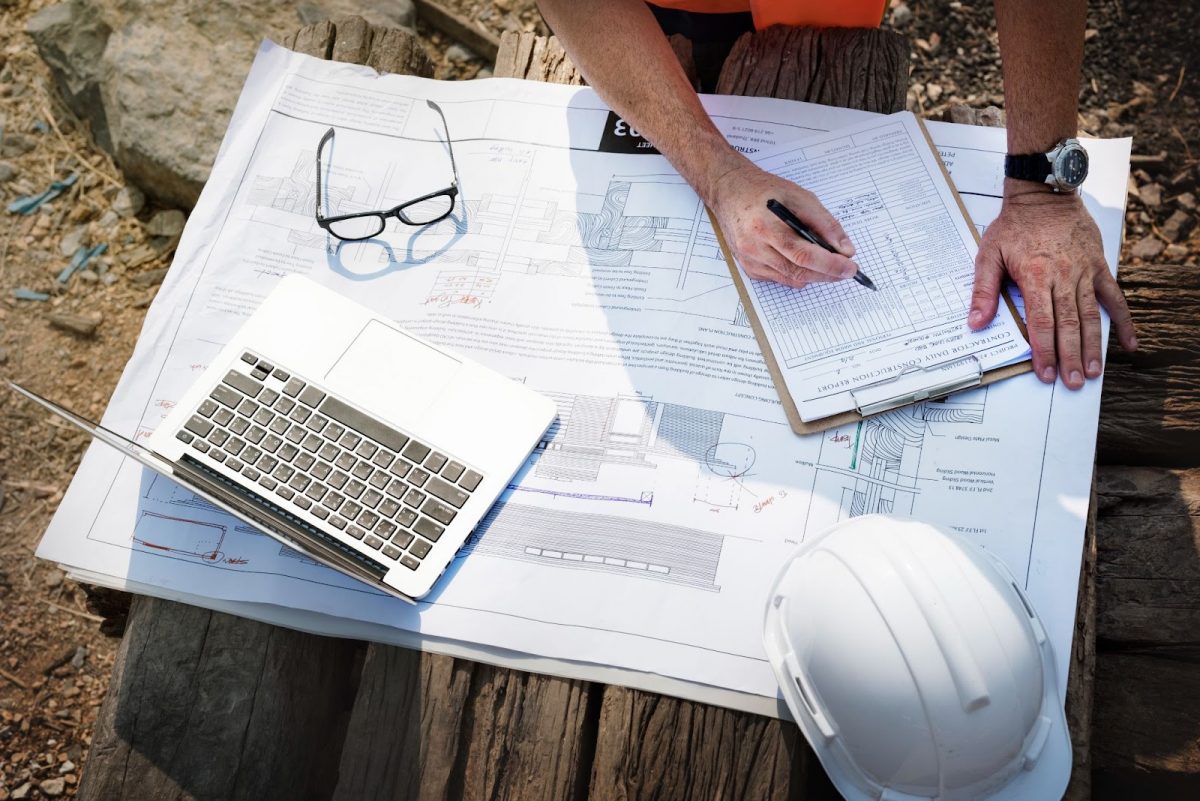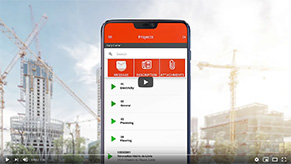
21 September, 2022
Mobile-Punch
SHARE
Technology in construction to watch in 2022
The technological landscape is evolving at a phenomenally fast pace. This is no different in the construction sector, as construction technology continues to evolve and propel the industry forward so that it becomes greener, cheaper, and faster. The challenge for the construction industry is not whether or not they will digitize their operations, but when and how they will adopt new technology to optimize revenues. In this post, we examine some of the most important construction technology innovations that will affect the industry in 2022.
What is construction technology?
Construction technology refers to the collection of innovative machinery, tools, modifications, software, etc. used during the construction process. The purpose of construction technology is to push the construction industry forward, drive innovation and advancement, and increase efficiency.
The impacts of the digital shift
What are examples of construction technology?
Artificial intelligence, BIM software, 3-D printing houses, and LiDAR are examples of construction project management that use automated construction technology. They are all designed to help the industry improve working conditions, efficiency, health and safety, and a variety of other factors.
What is the role of technology in construction?
As a result of the sanitary crisis, the construction sector is undergoing rapid change, and the need for increased process transparency and control is becoming more apparent. Many construction firms are investing in technology, with the most popular areas of focus being digitalization and supply chain management, allowing them to adapt to changing work environments.
In addition, the necessity for site-specific safety technology is becoming increasingly important. With the advancement of collaboration technologies, construction companies will be able to collaborate on a single integrated platform, making it the go-to solution for the industry’s rising health and safety concerns.
The industry has been dealing with a slew of other difficulties that have necessitated it becoming more agile and responsive. Skilled labor shortages, new sustainability and emission standards, advances in information technology and software, and ongoing health and safety concerns and practices are among them.
Forcing the industry to stay ahead of the game, technology such as robot labor and 3D printed houses, for example, has become a reality so swiftly that general contractors may not have noticed their evolving environment. It’s difficult to keep up with everything with so many developments happening so quickly.
Innovative technologies to watch for in the construction industry in 2022
Innovative technologies help the construction industry operate more effectively and focus on sustainability as resources become increasingly scarce.
Here are the most important technological trends for the construction sector in 2022:
- Time clocking apps
- Augmented reality
- Wearables
- Robots
- Drones
- Modular construction
Time Clocking Apps
Time tracking apps have revolutionized time management in the construction industry by reducing absenteeism and time theft. Mobile-Punch is synonymous with thousands of dollars in savings. Imagine never having to complete timesheets on Fridays.
Our intuitive system calculates the hours worked precisely and gives construction companies real-time access to data. The software even automates professional report presentation for customers. By automating your timekeeping, Mobile-Punch can help you keep track of your time more efficiently.
Benefits of time clocking
- Bill accurately: Automatic time tracking tools capture everything you do while working as you travel between clients and projects, creating a flawless record of all work actions. They remove guesswork and manual error.
- Project management: Time-tracking apps can help you collect all of your project data, allowing you to improve estimations and track costs in real-time. They are essential tools to improve project management.
- Increased productivity: Time monitoring tools eliminate operational inefficiencies and automate tasks to save you time.
- Progression: Time monitoring apps do more than just collect data; they also present it in useful reports. It’s ideal for providing status updates to managers or giving clients a detailed explanation of where their money went.
When all features and benefits are evaluated, Mobile-Punch is the best work time monitoring tool in Canada.
Augmented Reality
Augmented reality (AR) is a digital information layer that augments a view of the real world. Construction experts can look at a job site with additional information displayed immediately on top of the picture by utilizing a mobile device with AR capability.
A construction worker, for example, may point a tablet at a wall and have the tablet display the wall’s architectural drawings as if they were part of the physical environment. Because it gives more information exactly where it’s needed, augmented reality has tremendous implications for construction.
Applications
Here are some augmented reality applications:
- AR technology can help construction workers follow building blueprints more accurately by measuring a physical space in real-time.
- Contractors can visualize prospective project adjustments before committing to them by overlaying potential project alterations right onto the job site.
- Augmented reality devices can detect hazards in the environment and display real-time safety information to workers.
While augmented reality can be utilized on a tablet or other portable computer, the future of augmented reality will most likely rely on AR glasses, which will allow users to have hands-free access to critical information at all times. Several construction wearables are expected to gain traction in the coming year, including these augmented reality glasses.
Wearables
Construction wearables have several productivity benefits, but their quick acceptance is likely due to their safety advantages. Construction is one of the most dangerous sectors to work in, with hundreds of workers injured each year due to falls and machine collisions. Wearable technology can improve worker safety and avoid injuries and deaths across the sector.
Technology Examples
Here are a few examples of construction wearables that are now available:
- Smart boots can detect workers at risk of colliding with nearby sensor-equipped construction vehicles.
- Smart hard hats detect microsleeps, which put employees in danger of damage, by monitoring brainwaves.
- Power gloves can decrease overuse injuries by increasing dexterity and strength when worn on a worker’s hands.
Smartwatches, monitors, and goggles, among other wearables, improve lone worker safety and tiredness detection. We’re at the start of a construction revolution that will optimize efficiency and safety.
Robots
Although construction robots are still a long way from taking over the sector, numerous designs and suggestions are being considered as the industry grapples with a manpower crisis and the need for social separation.
Here are three categories of robots that are changing the construction industry:
- Factory robots are capable of doing a single task flawlessly and repeatedly, such as simple manufacturing operations.
- Collaborative robots can help workers by transporting tools or equipment.
- Fully autonomous robots can scan the surroundings and do complex tasks with tools independently, similar to the robots of science fiction.
While such robots have yet to be widely employed in the construction industry, other once-futuristic technologies are now commonplace. Drones, for example, are already commonplace on building sites, performing tasks that would have been prohibitively expensive only a few years ago.
Drones
Small, camera-equipped flying drones can cut the cost of processes that were previously very expensive. Here are a few examples of how drones are helping on construction sites:
- Topographic maps: Mapping is essential during the planning stage. Aerial drones can quickly survey enormous areas of land, cutting mapping expenses by up to 95%.
- Equipment tracking: On a large project site, purchased or rented equipment might easily become misplaced, but drones can keep track of all equipment on-site automatically.
When no one is working, job sites are prone to theft of materials and equipment, but drones can monitor a site even when no one is present. Drones can also affect progress reporting, employee safety, and building inspections.
Modular Construction
Modular construction is a type of construction in which structures are built off-site, delivered in pieces, and assembled by cranes. Modular construction can be up to twice as fast as typical projects since the building is constructed while the site is being prepped.
Modular construction provides the following advantages:
- Construction waste is reduced since numerous buildings are built at the same time in one facility. Excess materials from one project may easily be reused on another.
- Modular construction reduces carbon emissions by lowering total deliveries and total time spent on-site.
- Machine learning improves manufacturing processes by reducing waste and boosting efficiency over time.
Although modular construction is still a minor part of the overall industry, two-thirds of contractors expect it will grow in popularity in the coming years. 3D printing is a related technology that advantages both modular and traditional construction.






